INDIAN ARMED FORCES CHIEFS ON
OUR RELENTLESS AND FOCUSED PUBLISHING EFFORTS

SP Guide Publications puts forth a well compiled articulation of issues, pursuits and accomplishments of the Indian Army, over the years

I am confident that SP Guide Publications would continue to inform, inspire and influence.

My compliments to SP Guide Publications for informative and credible reportage on contemporary aerospace issues over the past six decades.
Technology Trajectory
India’s present holdings of UAVs are extremely low and there is a need for induction in large numbers to meet the requirements for the future

What one Predator drone pilot described of his experience fighting in the Iraq war while never leaving Nevada: ‘You’re going to war for 12 hours, shooting weapons at targets, directing kills on enemy combatants. Then you get in the car and you drive home and within 20 minutes you’re sitting at the dinner table talking to your kids about their homework.’
—P.W. Singer, American political scientist, an international relations scholar and a preeminent specialist on 21st century warfare
Unmanned aerial vehicles (UAVs) are complex aerial vehicle systems which include ground stations, satellite connectivity, sometimes on-board weapons and other components. Militarily these systems are gaining tremendous importance, as they can conduct precision strikes on distant targets without collateral damage. While in the previous decades military UAVs were very simple pieces of equipment, the technology has advanced rapidly. They are now used all over the world and is a multi-billiondollar industry. According to the Teal Group, current worldwide military UAV production stands at around $2.8 billion, projected to grow to $9.4 billion by 2025.
Classification of UAVs
The classification of UAVs is best enumerated by that followed in the US Armed Forces. They follow a tier system and are separate for the US Air Force, Marine Corps and the US Army. The US Air Force tier commences with the Small/Micro UAV filled by the Batmav (Wasp Block III). Tier-I consists of low altitude Long Endurance represented by the Gnat 750. Tier-II consists of Medium Altitude, Long Endurance (MALE) which currently has MQ-1 Predator and MQ-9 Reaper. Tier-II+ has High Altitude, Long Endurance (HALE) UAV. These UAVs have an altitude ceiling of 60 to 65,000 ft, airspeed of 560 kmph, radius of 6,000 km and endurance of 48 hours. The role of this type of UAV is currently filled by the RQ-4 Global Hawk. Tier-III is a high altitude, long endurance low observable UAV. The parameters are similar to the Tier-II+ aircraft. RQ-170 Sentinel is in this class of UAVs. The characteristics of the Marine Corps tiers are similar except for the specific UAV. With regard to the Micro UAV, Wasp III fills the role. Tier-I filled by RQ–11B Raven B. Tier-II consists of Scan Eagle and RQ-2 Pioneer. Tier-III Pioneer and Shadow. The US Army which has also inducted UAVs follows a pattern similar to that of the US Marines. Most of the UAVs of the Indian armed forces were procured from IAI. The Indian Army initially obtained the Searcher Mark I, followed by the Searcher Mark II which could operate at an altitude of 15,000 ft and finally the Heron, which could operate at an altitude of 30,000 ft. The Indian Air Force (IAF) acquired the Searcher Mark II and Heron UAVs. The Indian Navy also acquired the Heron UAVs which suited its long range maritime requirements. The IAF has also acquired the Harop, which is more like an unmanned combat aerial vehicle (UCAV).
Unmanned Platforms Gaining Ground
One important aspect to keep in mind about military technology development is that almost all countries have top secret programmes. While it is possible to get a good sense of where things stand based on data in the public domain, the picture will always be incomplete. India’s present holdings of UAVs are extremely low and there is a need for induction in large numbers to meet the requirements for the future.
AMERICA IS A LEADER IN THE USE OF ARMED DRONES, BUT IT ALSO USES A WIDE RANGE OF UAVS, FROM THE MASSIVE TO THE TINY, FOR SURVEILLANCE
There is serious thinking in the Royal Air Force (RAF) of the UK that 30 per cent of the present strength of fighter aircraft should be replaced by UCAVs. The US Navy already has plans for deploying the Northrop Grumman X-47B unmanned combat air system which was test flown at the Edwards Air Force Base in California. According to a Northrop Grumman statement, the programme will demonstrate the first ever carrier launch and recovery by an autonomous unmanned aircraft with a low observable platform. They would also undertake autonomous aerial refuelling. This indicates the direction the world is heading with regard to UAVs and UCAVs.
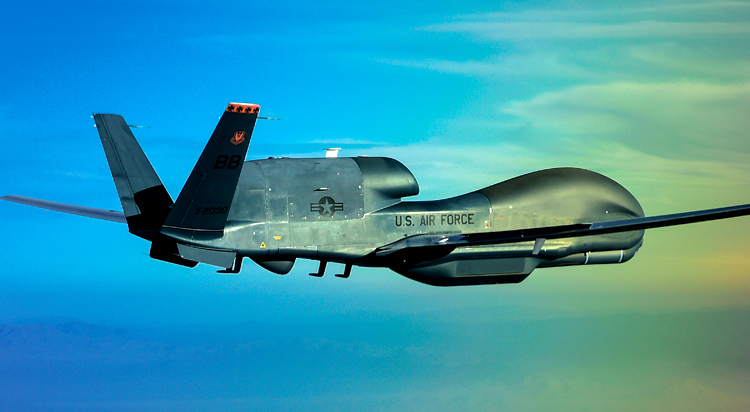
Further, India has to note that China has already featured its Chang Hong-3 UCAV platforms in various defence exhibitions in recent years. Considering China’s developments in this field, the day is not far when Pakistan will receive these Chinese aerial systems. The Indian armed forces have to judiciously examine their future requirements of UAVs. While the requirements may be clear, what is of importance is the roadmap for their procurement and development of UAVs in India.
The India Scenario
The various projects on UAVs by DRDO are in progress. Abhyas is a high-speed expendable aerial target (HEAT) being built by the Aeronautical Development Establishment (ADE) of DRDO for the Indian armed forces. HEAT offers a realist threat scenario for practice of weapon systems. Lakshya is a Pilotless Target Aircraft (PTA) and is a reusable aerial target system. Nishant is a UAV also developed by ADE which is primarily designed for intelligence gathering, reconnaissance, training, surveillance, target designation, artillery fire correction, damage assessment, ELINT and SIGINT. Nishant is one of the few UAVs in the world in its weight-class capable of being catapultlaunched and recovered by using parachute, thus eliminating the need for a runway as in case of conventional take-off and landing with wheels.
AURA is a long range, autonomous UCAV being developed for the IAF and the Indian Navy. The ADA describes the AURA as a “Self-Defending high-speed reconnaissance UAV with weapon capability”. The AURA properties of ‘stealth’ which makes it almost undetectable by radar. Unlike other UCAVs armed only with missiles, the AURA will be capable of releasing missiles, bombs and precision-guided munitions. It will act as the ultimate ‘force-multiplier’ and ‘game changer’ in any battle scenario of the future. The AURA programme is also meant to complement other programmes to provide the IAF with the best technically advanced UCAV which will form the backbone of the IAF in the next decade. It is also known as Indian unmanned strike aerial vehicles (IUSAV).
THE PRIVATE SECTOR COULD BE ENCOURAGED FOR PARTICIPATION IN THEIR MANUFACTURE AS WELL AS RESEARCH IN THE REGIME OF UNMANNED AERIAL VEHICLES
The Tactical Air-Borne Platform for Surveillance-Beyond Horizon 201 (Tapas-BH 201) which was known as Rustom-II, is being developed by DRDO and has completed its maiden flight. This will be followed by development of nine more prototypes for testing after which the certification process will begin. It is also expected that most of the basic technological requirements for developing the UAV/UCAV will be tested on Rustom and Tapas programmes first before implementation on the AURA project. The DRDO is going to use the Kaveri engine to power this unmanned vehicle. DRDO also clarified that unlike all the previous branding, Rustom-II won’t be a combat UAV and that it is only being developed for surveillance. The 1,500 crore project is being tested at a time the armed forces plan to increase their UAV/drone platforms, including those with combat abilities.
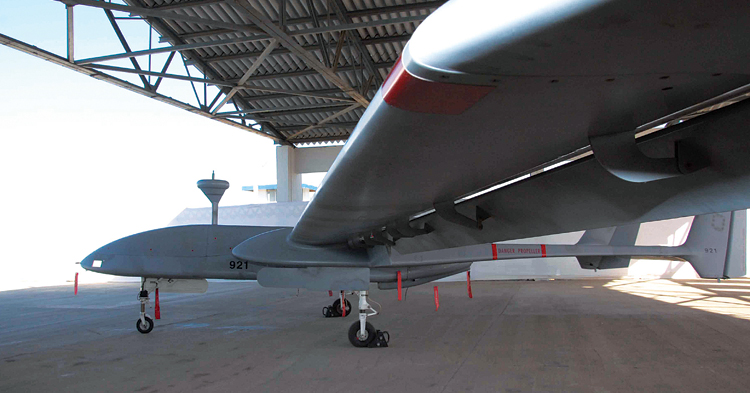
The DRDO Netra, a UAV for surveillance and reconnaissance operations, has been jointly developed by DRDO and ideaForge, a Mumbai-based private firm. Netra can be launched from a small clearing and it can fly up to a distance of 2.5 km from its takeoff point. The operational altitude of the UAV is 200 m. With an on-board wireless transmitter, it can carry out surveillance in an area of 1.5 km Line of Sight (LOS) at the height of 300 m, for 30 minutes on a single battery charge. IdeaForge is also working on a more advanced version of Netra which will have an increased flight time from the present 30 minutes per battery charge.
US – the Global Leader
The US is by far the largest researcher, producer and user of military drones. It will account for 77 per cent of total worldwide military research, development, test & evaluation (RDT&E) spending on UAVs in the coming decade and just over half of all military procurement. The most recent US military budget request called for $2.4 billion to be spent on research, upgrades and procurement of unmanned aerial systems. The single biggest expenditure is $1.2 billion for the MQ-9 Reaper, the primary offensive strike drone for the US military. The MQ-9 Reaper is built by General Atomics Aeronautical Systems and the latest in their line of the Predator-series. This drone has a top speed of 240 knots, maximum altitude of 50,000 ft, can carry a 3,750 lb payload and can operate for 27 hours. It is equipped with advanced infrared sensors, cameras, laser range-finders and several possible ordinances. They can be controlled remotely or fly autonomously.
Psibernetix, an Ohio-based artificial intelligence company, has developed a fuzzy logic Artificial Intelligence (AI) they named Alpha. They claim their AI now easily bests highly trained pilots in simulated aerial combat where opposing planes try to shoot down each other. This AI has not officially been deployed in any military system, but it indicates what can be theoretically done in the future.
America is a leader in the use of armed drones, but it also uses a wide range of UAVs, from the massive to the tiny, for surveillance. One of the Pentagon’s efforts to always improve its surveillance capacity is the development of tiny and relatively inexpensive Perdix drones. These drones have been undergoing testing for the past few years. Unlike large remote-controlled drones that can perform autonomous functions, these cheap AI drones operate entirely autonomously using swarm intelligence. While America is the dominant user and developer of UAVs, its role as an exporter of these systems is relatively limited due to laws restricting their sales. That might change in the future as President Trump recently launched a review of these restrictions.
Drone Swarms
Although large Predator and Reaper drones are the face of modern militaries, drone swarms, dozens of fixed-wing drones flying in coordinated formation, could be the future of unmanned combat. A drone swarm’s advantage relies on the age-old truism of strength in numbers. Where one missile can knock out a multi-million-dollar F-35, a swarm can take on casualties and failures and just keep going. If a swarm is big enough, it can overwhelm defenders by attacking with more drones than they can handle. In the US, the Navy’s Locust programme wants to field a swarm of attack drones that would cost collectively less than a single missile, while DARPA works on swarming Gremlins and the Air Force develops miniature drones that can overwhelm air defences.
The key to a swarm is that the entire group acts as a single unit, but they’re not centrally controlled. Instead, each member of the swarm uses software for coordination that mimics how flocks of birds behave. Currently, military drones like the Reaper are flown individually by a remote pilot, but a single operator could command any number of drones in a swarm. The operator issues a general instruction such as “search this area,” and the swarm automatically co-ordinates its individual members to get the job done.
Countering Threat from UAVs
The rise of drones has also created the need for the development of anti-drone systems. Anti-UAV Defence Systems are being deployed by US forces to counter small drones being used by rebel groups. The US military also recently contracted with Syracuse Research Corporation to build anti-UAV systems with spatial, frequency and optical surveillance capabilities to detect drones and then disable them with jamming equipment. Israel is also a major innovator in anti-drone systems. Israeli defence contractor Rafael recently announced the launch of their ‘Drone Dome’. It is a radar-based system which can identify targets and use a laser to neutralise them from several kilometres away. It is a natural progression of Rafael’s Iron Dome system to intercept rockets and artillery shells.
The Way Ahead for DRDO
Development projects of DRDO have made good strides in the field of UAV, but must meet the induction timelines, as inordinate delay is operationally un-acceptable as technology keeps changing and hence the operational requirements of the service. The mini UAV is of simple technology and could be indigenously developed to meet with tactical requirements. The UCAV and the loitering missile are being produced by Israel which is willing to set up joint ventures with DRDO. It would be prudent if our inescapable requirements are fine-tuned in cooperation with the selected original equipment manufacturers and then subsequent requirements are delivered by joint ventures. The private sector could be encouraged for participation in their manufacture as well as research. Various development issues, including technology milestones, could be examined by the three services in conjunction with DRDO.
Amazing Break Throughs
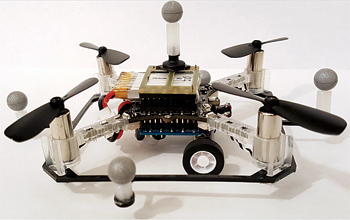
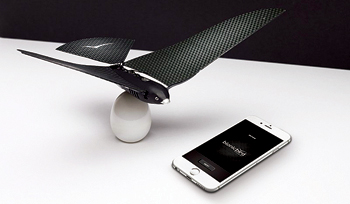
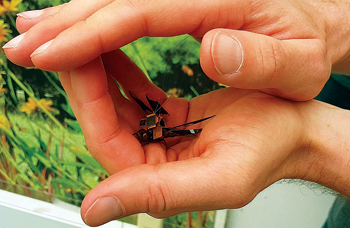
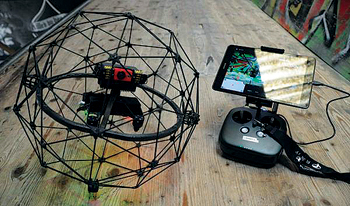
Drone – Both Fish and Bird Drones or unmanned aerial vehicles (UAVs) are supposed to be different from unmanned underwater vehicles (UUVs), but Rutgers University has come up with a drone that flies like bird and swims like fish. In 2015, Office of Naval Research, US Navy, after seeing a demonstration from the Department of Mechanical and Aerospace Engineering, immediately sanctioned $6,18,000 to develop a ‘air-and-water craft’– equally good at flying and navigating under water. Armed with four pairs of rotor blades that can operate independently, to tilt the drone for swimming under water and then tilts the drone upright for coming out of water for flying, the drone moves through the two mediums seamlessly, without any loss of speed. This drone could be a wonderful addition to the Navy. it could be used to locate and inspect shipwrecks, sea mines, inspection of coastal infrastructure and assessment of underwater damage, disaster management and similar operations.
Precursor of Flying Car
Inspired by animals that can walk and fly, researchers at the Computer Science and Artificial Intelligence Laboratory (CSAIL), MIT, are developing drones that are capable of driving and flying. MIT in a press release said that researchers are aiming to develop robots that can manoeuver on land and take to the skies. In a paper, the team presented a system of eight quadcopter drones that can fly and drive through a city-like setting with parking spots, no-fly zones and landing pads. The drone has two small motors with wheels for driving. In a simulation run, the drones flew for 90 metres or drove for 252 metres. The team believes the project will provide algorithm for mixed-mode transportation and can provide solution to the traffic congestion prevalent in the cities across the world.
Bionic Bird
A drone may hover and fly like bird, but this is where the resemblance ends. But not anymore. Companies across the globe are developing drones with shape and wings like that of birds and flies by flipping of wings – a true mechanical bird. Bionic Bird – The Flying App is one such drone, weighing nine grams with range of around 100 metres. The body of the bird is made of foam and wings and tails are of carbon fiber which are controlled through app. The Bird is charged through an egg-shaped charger called Turbo-Charge egg, small enough to fit in the pocket. The bird, an outcome of years of groundbreaking research, contains many patents in micro technology.
Hybrid Dragon Fly
There are drones which mimic flying insects, but none can come closer to a real insect. If reaching the capability of real insect is very difficult, then the next best thing is to improve a living insect by integrating technology in its biology. One such example is the DragonflEye, developed by a not-for-profit technology firm Draper, globar leader in micro systems and navigation, is a hybrid drone created by combining miniaturised navigation, synthetic biology and neurotechnology into the nervous system of the fly. Optogenetics, system to guide neurons in the dragon fly, has been developed together by Draper and Howard Hughes Medical Institute (HHMI) at Janelia Research Campus. The system, small enough to be a bagpack for the fly, has market potential in guided pollination, payload delivery, reconnaissance, precision medicine and diagnostics.
Protects Itself
Drones are fragile. They are required to be light and therefore, their fuselages are not strong enough to survive collision. More often than not, damaged drones have to be discarded. To overcome this inherent limitation, Flyability, a drone manufacturer, has come up with a collision resistant ‘ELIOS’ which comes with a carbon fiber protective frame. It can survive any collision up to the speed of four metres per second. Spherical with modular subcomponent, the frame of the drone, with diameter just below 400mm, is smaller than the smallest standard manhole and provides all around protection with large enough opening to access batteries and payloads.
Can Land on a Wall
In another case of bio-inspired UAVs, a team of researchers from University of Sherbrooke has developed an autonomous fixed-wing Sherbrooke’s Multimodal Autonomous Drone (S-MAD) capable of landing on vertical surfaces and taking off. S-MAD, Inspired by bird’s ability to land on vertical surfaces, through its on-board sensors reduces thrust of its engine quickly before landing and uses microgriffs to cling to vertical surfaces. It can also take-off vertically from the wall. S-MAD, considered as the world’s first fixed-wing drone capable of repeated perching and takeoff, can inspect building collapsed during earthquake and bridges. The ability to perch can also help it to undertake long duration surveillance missions by saving energy.
Understand Hand Gesture
It is dream to control machines without touching them. But not anymore, DJi, a Chinese drone maker has developed a UAV called Spark that can be controlled through hand gestures along with remote control and mobile phones. The Spark can recognise the owner’s face through ‘FaceAware’ technology and immediately lifts off from the hand. After takeoff, the drone gets into ‘Gesture Mode’ and begins taking command from hand gestures. It is also capable of flight autonomy and home coming.





